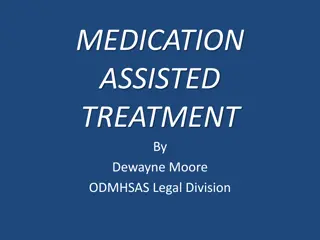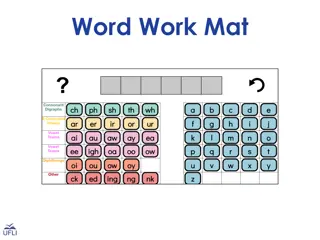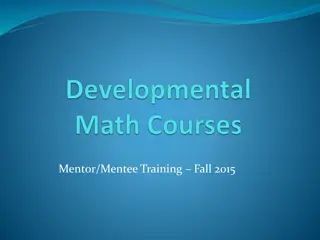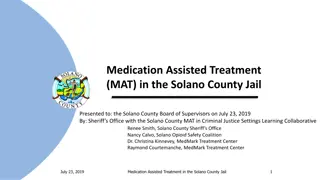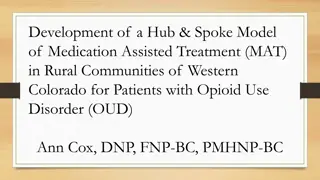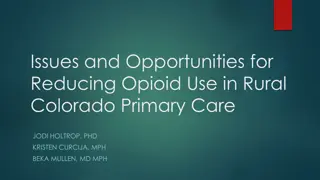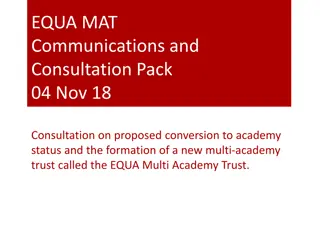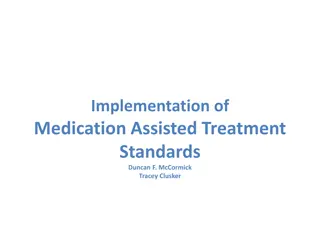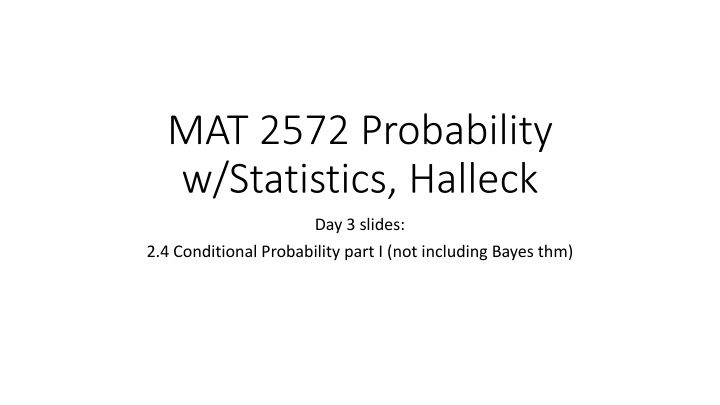
Understanding Conditional Probability and Independence in Statistics
Explore the concept of conditional probability and independence in statistics through examples like dice rolls, card draws, and family scenarios. Learn how to calculate conditional probabilities and determine the independence of events in probability theory.
Download Presentation

Please find below an Image/Link to download the presentation.
The content on the website is provided AS IS for your information and personal use only. It may not be sold, licensed, or shared on other websites without obtaining consent from the author. If you encounter any issues during the download, it is possible that the publisher has removed the file from their server.
You are allowed to download the files provided on this website for personal or commercial use, subject to the condition that they are used lawfully. All files are the property of their respective owners.
The content on the website is provided AS IS for your information and personal use only. It may not be sold, licensed, or shared on other websites without obtaining consent from the author.
E N D
Presentation Transcript
MAT 2572 Probability w/Statistics, Halleck Day 3 slides: 2.4 Conditional Probability part I (not including Bayes thm)
What is the conditional probability P(A | B) ? If we know that the outcome is part of one event, B, how does that effect the chance that the outcome is part of A as well? Example: Suppose that dice are rolled and B sum is even happened. How does that effect whether we had rolled A doubles ? 1 11 31 51 2 22 42 62 3 13 33 53 4 24 44 64 5 15 35 55 6 26 46 66 One approach: restrict sample space, e.g, only look at outcomes whose sum is even. What portion of new space consists of doubles? 6/18 = 1/3 1 2 3 4 5 6
Alternate but equivalent approach Define: P(A | B) = P(A B) / P(B) For our example (A doubles, B sum is even), A B P(A B) = P(A). Thus, P(A | B) = P(A B) / P(B) = P(A) / P(B) = (1/6) / (1/2) = 1/3
Example 2.4.1 Card drawn from poker deck: what is chance of club, given a king? Note: chance of club is , whether or not a king is drawn, i.e., occurrence of king had no effect on chance of club. Similarly, with conditioning event club is drawn , chance of king is 1/13, regardless of whether conditioning event happened. When 2 events have no effect on each other, they are said to be independent (Section 2.5 is devoted to this topic). Are doubles and sum is even independent events?
Example 2.4.2 Consider families having two children. Assume that the four possible birth sequences bb, bg, gb, gg are equally likely. What is chance that both children are boys given that at least one is a boy? Many would say . However the restricted sample space is {bb, bg, gb} And only one of these outcomes has both children as boys, hence P(bb| at least one boy) = 1/3. Why the confusion? Conditioning event is at least one child is boy , not first child is boy .
Two events A and B are defined such that (1) the probability that A occurs but B does not occur is 0.2, (2) the probability that B occurs but A does not occur is 0.1, (3) the probability that neither occurs is 0.6. Example 2.4.3 What is P(A|B)? A\B, B\A, A B and (A B)c are a partition (mutually exclusive & union is S) so P(A B) = 1 (.2+.1+.6)=.1 Thus P(A | B) = P(A B) / P(B) =.1/(.1+.1)=1/2 A B 0.2 0.1 .1 0.6
Example 2.4.5 Max and Duffy shoot simultaneously at dog (mistaken for a deer). Max has 20% chance of hitting dog, Duffy 30% chance, and the probability is 6% that they will both be on target (showing independence). Suppose dog is hit by exactly one bullet. What is chance that Duffy fired shot? Most of us would guess, 30/(20+30)=.6 Dog has been hit by one bullet means we are in M\D D\M (conditioning event). What we would like is chance that we are in the D part of that region. M D
Solution to Example 2.4.5 Max and Duffy shoot simultaneously at dog (mistaken for a deer). Max has 20% chance of hitting dog, Duffy 30% chance, and the probability is 6% that they will both be on target (showing independence). Suppose dog is hit by exactly one bullet. What is chance that Duffy fired shot? Reminder that we are in M\D D\M region. P(D\M)/(P(M\D)+P(D\M)) =.24/(.14+.24) .63 Which is close to but slightly higher than our intuitive answer of .6. .14 .24 .06 M D
Example 2.4.6 Highways connecting villages at A and B are shown. Travel between A and B during the winter months is not always possible, the roads sometimes closed due to snow. E1, E2, and E3 denote the events that highways AB, AC, and BC are passable and have probabilities given on the right: Problems: 1) What is the probability that a traveler will be able to get from A to B? 2) Which route should a traveler starting from A try first? Also:
Solution of Example 2.4.6, 1) As a preliminary, clear denominator in definition for conditional prob.: P(A B)= P(B) P(A|B) * Let E1 be upper route is open and E2 E3 lower route is open. Our goal: use P(A B) = P(A) + P(B) P(A B) with A=E1 & B=E2 E3** P(E1) has been given. Substituting into*: P(E3 E2) = P(E2)P(E3|E2) = 4/5*3/4= 3/5 Using * once more: P(E1 (E2 E3))=P(E2 E3)P(E1|E2 E3) =(3/5)(1/2)=3/10 Now , we use ** P(at least one route passable)=2/5+3/5-3/10=7/10
Solution of Example 2.4.6 2) Which route should a traveler starting from A try first? If both routes are either open or closed, then it doesn t matter. Hence, we restrict ourselves to situation where only one route is open. In that case, which route has better chance of being open? (We have seen this situation in other problem, e.g., Max and Duffy. ) P(E1 | just 1 open)=P(E1\ E2 E3 ) /[P(E1\ E2 E3 ) + P(E2 E3 \E1) ] =.1/(.1+.3)=1/4 Since P(E1 | just 1 open) <.5, then E2 E3 should be tried first.
Example 2.4.7 Urn contains 5 white, 4 black, and 3 red chips. 4 chips are drawn sequentially and without replacement. What is the probability of obtaining the sequence wrwb? We record the urn contents at the beginning of each stage, the desired outcome x & its probability. Product of fractions gives answer. w b r x P(x) 5 4 3 w 4 4 3 r 4 4 2 w 3 4 2 b 5/12 3/11 2/5 4/9 2/99 P(wrwb)
Partition (revisit) A set of events A1, A2, . . . , An partition S if every outcome in the sample space belongs to one and only one of the Ai s that is, the Ai s are mutually exclusive and their union is S. In symbols, {Ai} is partition of S if for i j
Thm 2.4.1 Given a partition {Ai} of S and an event B,
Example 2.4.8 Urn I contains 2 red and 4 white chips; urn II, 3 red and 1 white. A chip is drawn at random from urn I and transferred to urn II. Then a chip is drawn from urn II. What is the probability that the chip drawn from urn II is red?
Solution to example 2.4.8 Set: A1 Chip transferred from urn I is red A2 Chip transferred from urn I is white, B Chip drawn from urn II is red . Then
Example 2.4.9 A standard poker deck is shuffled and the card on top is removed. What is the probability that the second card is an ace? Let B: second card is an ace A1: top card was an ace A2: top card was not an ace
What you dont know, doesnt matter. In the previous example, the solution was 4/52 or 1/13, which may not have been a surprise to some of you. This illustrates a basic principle in probability: What you don t know, doesn t matter. The removal of the top card is irrelevant to any subsequent probability calculations if the identity of that card remains unknown. Another example: given an urn with 3 red and 2 blue chips. Remove and record but not replace a chip and then do the same for a 2nd chip. What is the chance that the 2nd chip will be red? Without doing any calculations, we know the answer is 3/5.
Example 2.4.11 In upstate congressional race, incumbent Republican (R) is running against field of 3 Democrats (D1, D2, and D3) seeking nomination. The probabilities of D1, D2, or D3 winning the primary are 0.35, 0.40, and 0.25, respectively. Furthermore, polls suggest that R would have a 40% chance of defeating D1 in the general election, a 35% chance of defeating D2, and a 60% chance of defeating D3. What is chance that Republican will retain his seat?
3 chips are placed in urn: 1st chip is red on both sides. 2nd chip is blue on both sides. 3rd chip is red on one side & blue on other. Example 2.4.12 One chip is selected at random and placed on a table. Suppose that the color showing is red. What is chance that color underneath is also red?
Solution to example 2.4.12 A: bottom side of chip drawn is red B: top side of chip drawn is red We want: Hence
Example 2.4.12 can be used as a con game. Most people think that bottom has 50-50 chance of being same color as top. Under incorrect presumption that game is fair, both participants put up same amount of money, but con artist bets bottom is same color as top. Con artist will win even-money bet 2/3 of the time, providing an income if bets are $5 and if game is played dozen s of times in an afternoon. Under these assumptions, how much will artist win on average each game? 2/3($5)-1/3($5)=$1.67 Actually, the most successful artists find a way to let participant win for a while and then find a way to turn around the game once the stakes become higher.






